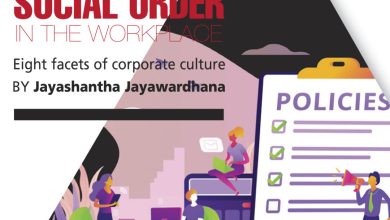COMMUNAL NARRATIVES
THE POWER OF STORYTELLING
Nicola Walsh discusses communications and the power of the written word
We love stories because they’re the currency of life. Telling tales is good for us because it helps deal with life’s problems. Recent brain research indicates that more neurons are fired when we imagine rather than recall facts. Fictional stimuli strengthen and refine our neural pathways.
However, we need to be part of a group to share stories. Through storytelling, we exchange knowledge and emotions, and connect with one another. There is a symbiotic exchange between the narrator and listener, and this is essential to our wellbeing.
Maslow’s hierarchy of needs emphasises that a sense of belonging is an important social need. After food, water and safety, we need to belong.
Being in a group makes us feel good because chemicals such as oxytocin in our brains drive our need for togetherness. Without this need to be part of a group, our survival would be doomed. So being part of a group sharing stories is essential to our wellbeing.
We’re wired up to create networks and share narratives. The invention of the printing press in the 15th century provided more opportunities to share stories; and for the first time, narratives remained the same over many years and were shared quickly across wider networks. The printed word connected networks of people at different times, at fixed locations.
This remained largely unchanged with the invention of radio, film and TV in the 20th century. They all delivered sequential narratives in a prescribed and timely fashion. You waited for the six o’clock news or today’s newspaper. TV, press, radio and film connected wider networks of people in an often simultaneous and well-timed manner.
Then came the internet, which combined all the previous forms of media – viz. text, audio and video. It bombarded our senses of sight and sound, and fired our neurons rapidly, creating even larger social networks of multimedia storytelling.
Today, everyone has a chance to share a story. Highly random narratives engage audiences who then participate in the dialogue. We don’t merely share stories; we create, comment and share them instantaneously.
These stories create social networks that have no boundaries of time or place while its seamless connectivity and endless cascade of hyperlinks turn entertainment into a fascinating expedition.
Deliberately ambiguous narratives are posted on social media sites and wide networks of people debate open-ended questions on different topics.
The Star Wars franchise created a massive social network by providing stories with an infinite depth of detail, and crafted a blur between fact and fiction, author and audience, entertainment and education. The Bible also created communities of people although it took a few hundred years to establish a network and the death of millions along the way.
But is this good for us?
The benefits of social networks are many. They include global outreach and speedy connections that are rarely costly or intrusive. Sharing our stories requires little effort on Facebook, Twitter, Instagram and Snapchat; and our networks are large, entertaining, informative and selective.
However, emerging drawbacks are well documented. The stream of narratives on social media is fast-paced and overwhelming.
It promotes a sedentary lifestyle and can be a distraction from other life pursuits in addition to being addictive. And the truth and source of information isn’t always clear. Images posted are lasting and can damage reputations long after they’re uploaded. Being critically aware is essential.
Most social media sites are nurturing communications where text is king. Nowadays, young people are more likely to text than talk. Teenagers regard a call on a mobile as a sign of a deeper relationship.
Texting offers more control over the direction of the story because you can be deliberately ambiguous, avoid difficult conversations by changing the subject and choose when to respond.
So what happens next?
Social media sites will increasingly encourage e-commerce. Livestreaming and influencer programmes will become more prolific as they share stories on social networks. For example, the live online Old Spice advertisement had a famous footballer answering questions as he stood in his shower to promote the brand.
Will audio make a comeback and overtake text based sites?
Though podcasts exist, they are rarely interactive. Audio networks have the advantage of overcoming poor literacy skills and can be used in any language. But will users make the shift? Hiding behind the safety of a text will be a hard habit to break.
Verbal communication is the greatest advantage of the human race. We are a social species and sharing narratives has never been as prolific as it is today. Sticks and stones may break your bones but telling tales won’t hurt you!






